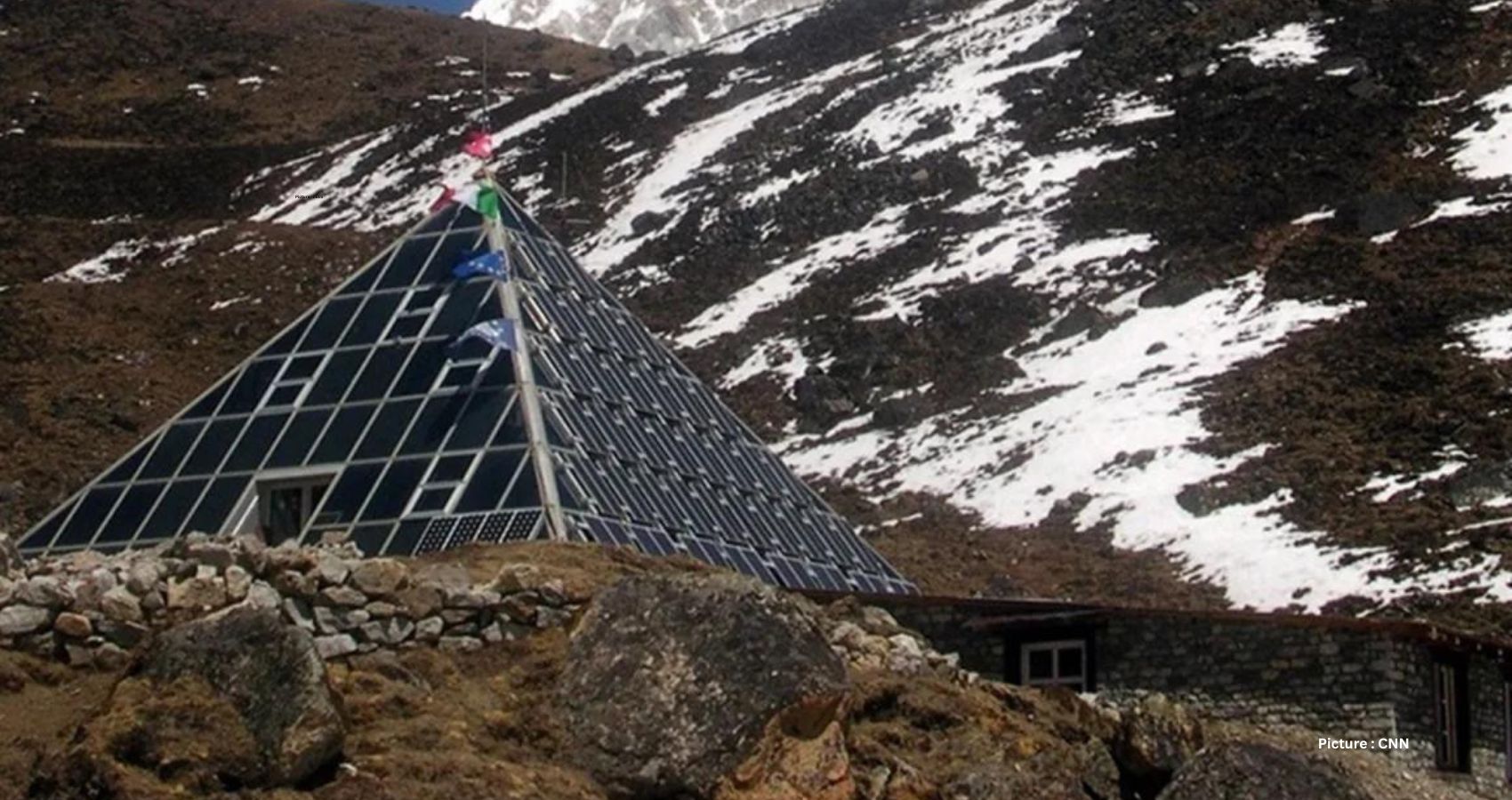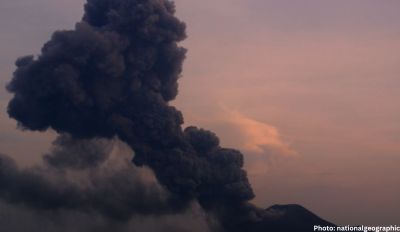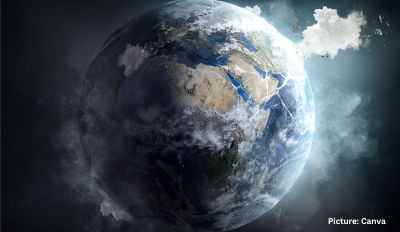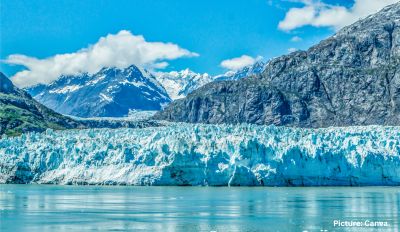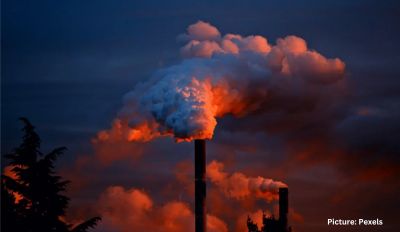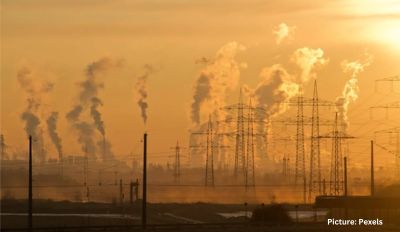Glaciers in the Himalayas are rapidly melting, but a recent report reveals a remarkable phenomenon in the world’s tallest mountain range that might be mitigating the impacts of the global climate crisis.
In a study published on December 4 in the journal Nature Geoscience, researchers discovered that when warming temperatures affect high-altitude ice masses, it triggers an unexpected reaction—powerful cold winds that cascade down the slopes, providing a cooling effect in the lower areas of the glaciers and adjacent ecosystems.
Francesca Pellicciotti, a professor of glaciology at the Institute of Science and Technology Austria and lead author of the study, explained, “This leads to an increase in turbulent heat exchange at the glacier’s surface and stronger cooling of the surface air mass.”
As the cool, dry surface air becomes denser, it sinks and flows down the slopes into the valleys, creating a cooling effect in the lower regions of the glaciers. Given that the ice and snow from the Himalayan range feed into 12 rivers, supplying fresh water to nearly 2 billion people across 16 countries, understanding the sustainability of this self-preserving cooling effect is crucial in the face of anticipated temperature increases in the coming decades.
The alarming rate of glacier melt in the Himalayas was highlighted in a June report, indicating a 65% faster melt in the 2010s compared to the previous decade. Fanny Brun, a research scientist at the Institut des Géosciences de l’Environnement in Grenoble, France, emphasized, “The main impact of rising temperature on glaciers is an increase of ice losses, due to melt increase.”
The lengthening and intensification of the melt season lead to glacier thinning and retreat, resulting in deglaciated landscapes that contribute to further temperature increases due to the albedo effect. Brun explained, “Light or ‘white’ surfaces such as clean snow and ice will reflect more sunlight (high albedo) compared with ‘dark’ surfaces such as the land that is exposed as glaciers retreat, soil, and oceans (low albedo).”
Surprisingly, at the base of Mount Everest, overall temperature averages appeared stable despite the region experiencing glacier melt. Franco Salerno, coauthor of the report and researcher for the National Research Council of Italy (CNR), noted, “While the minimum temperatures have been steadily on the rise, the surface temperature maxima in summer were consistently dropping.”
However, the cooling winds are insufficient to fully counteract the impact of increasing temperatures and glacier melt. Thomas Shaw from the ISTA research group with Pellicciotti commented, “The cooling is local, but perhaps still not sufficient to overcome the larger impact of climatic warming and fully preserve the glaciers.”
The scarcity of data in high-elevation areas globally prompted the study team to focus on using ground observation records from a climate station located at 5,050 meters (16,568 feet) on the southern slopes of Mount Everest—the Pyramid International Laboratory/Observatory. The station has recorded detailed meteorological data for almost 30 years.
Pellicciotti emphasized the global relevance of the process highlighted in the study, stating, “The process we highlighted in the paper is potentially of global relevance and may occur on any glacier worldwide where conditions are met.”
The study underscores the importance of collecting more high-elevation, long-term data to substantiate these findings and assess their broader impacts. Pellicciotti urged, “The new study provides a compelling motivation to collect more high-elevation, long-term data that are strongly needed to prove the new findings and their broader impacts.”
The Pyramid International Laboratory/Observatory climate station, located at a glacierized elevation of 5,050 meters, played a pivotal role in the research. Pellicciotti, Salerno, and their team utilized detailed meteorological observations from the station to conclude that warming temperatures trigger katabatic winds—a phenomenon where cold winds flow downhill, common in mountainous regions, including the Himalayas.
“Katabatic winds are a common feature of Himalayan glaciers and their valleys, and have likely always occurred,” Pellicciotti said. “What we observe, however, is a significant increase in intensity and duration of katabatic winds, and this is due to the fact that the surrounding air temperatures have increased in a warming world.”
The team also observed higher ground-level ozone concentrations correlated with lower temperatures, indicating that katabatic winds act as a pump transporting cold air from higher elevations down to the valley.
Comparing glacier loss in the Central Himalaya to Europe, Brun highlighted that, on average, glaciers in the Central Himalaya have thinned about 9 meters over the past two decades—a significantly lower rate than glaciers in Europe, which have thinned about 20 meters over the same period. Understanding how long these glaciers can locally counteract global warming is crucial for addressing climate change effectively.
Study coauthor Nicolas Guyennon, a researcher at the National Research Council of Italy, expressed optimism, stating, “We believe that the katabatic winds are the response of healthy glaciers to rising global temperatures and that this phenomenon could help preserve the permafrost and surrounding vegetation.”
However, further analysis is needed, and the research team aims to identify the glacial characteristics favoring the cooling effect. Pellicciotti emphasized the need for more long-term ground stations, stating, “Even if the glaciers can’t preserve themselves forever, they might still preserve the environment around them for some time. Thus, we call for more multidisciplinary research approaches to converge efforts toward explaining the effects of global warming.”
The surprising discovery of katabatic winds in the Himalayas provides a potential ally in the fight against climate change. While the glaciers are still under threat from rising temperatures, this natural cooling mechanism offers hope for the preservation of the delicate ecosystems and water sources dependent on the Himalayan ice and snow. The study underscores the need for continued research and data collection to fully understand the broader implications of this phenomenon and to develop effective strategies for addressing the challenges posed by a changing climate.

